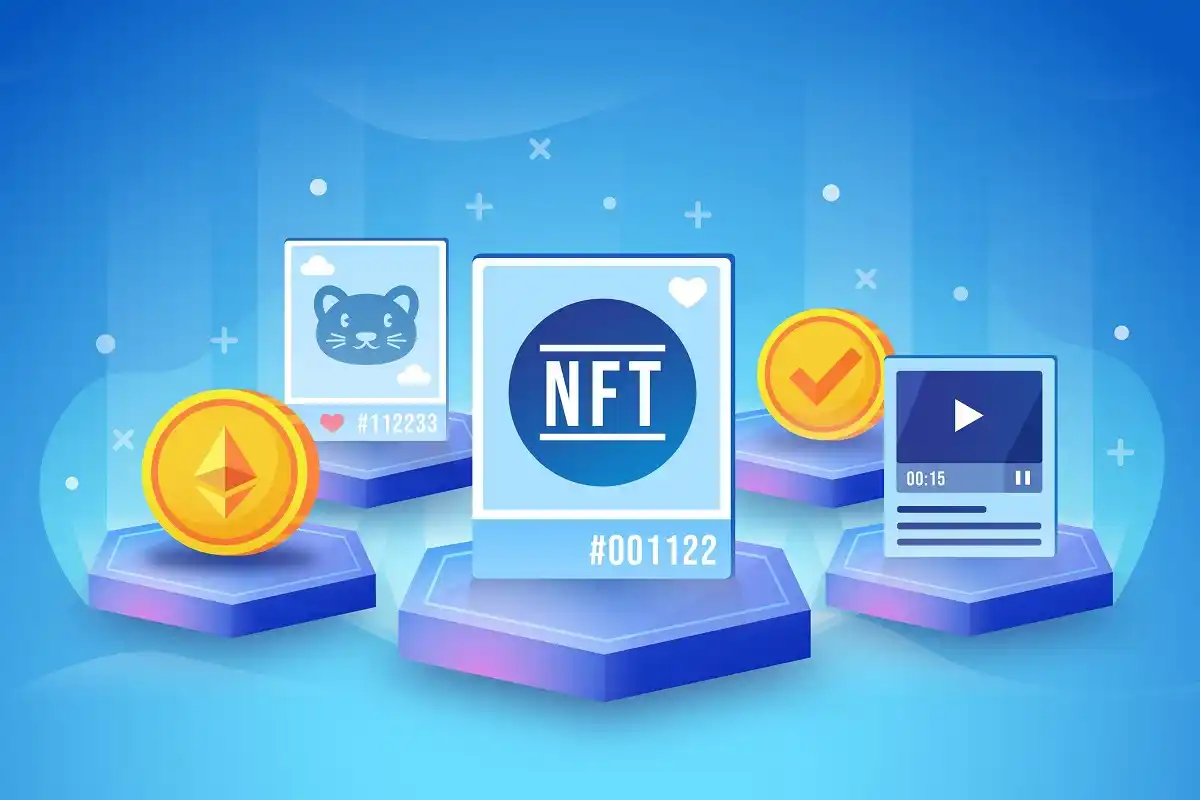Non-fungible tokens (NFTs) have gained substantial popularity these days. Thousands of traders and investors are joining the space each day. So, what are NFTs and how do they work? And another very pertinent question is “what is the future of NFTs?” Let’s dive deep to find out!
What are NFTs?
Non-fungible tokens are unique digital assets. They are verified using blockchain technology. It is important to understand that they are one-of-a-kind and cannot be replicated. So, they are unlike traditional cryptocurrencies such as Bitcoin or Ethereum, which are fungible (i.e. interchangeable).
Furthermore, it is also important to understand that each token contains a unique digital code. That code serves as proof of ownership and authenticity. This code is recorded on a blockchain, a decentralized digital ledger that is publicly accessible and resistant to tampering.
Moreover, NFTs can represent a wide range of digital assets, such as art, music, video games, and other forms of digital content. They have gained popularity as a way for both creators and buyers. Creators sell their digital creations and collectors invest in rare and valuable digital assets because they are unique and verifiable.
While the concept of NFT artwork and digital tokens is still relatively new, they have already been used to sell digital artwork for millions of dollars, and its potential uses and applications are still being explored.
How do NFTs work?
When an NFT is created, it is registered on a blockchain, typically the Ethereum blockchain. It contains metadata that includes information about the asset it represents, such as the name, description, and image or video file. The NFT also contains a unique identifier that makes it distinguishable from other tokens on the blockchain.
NFTs are typically bought and sold on online NFT marketplaces or auction platforms, where buyers can bid on or purchase them using cryptocurrencies. When a buyer purchases an NFT, they receive a digital certificate of ownership that is stored on the blockchain. This certificate proves that they own the unique asset that the NFT represents.
NFTs offer several benefits, such as security, transparency, and immutability because they are based on blockchain technology. Moreover, an NFT token cannot be altered or replicated after it is registered on the blockchain. This fact makes it a secure and reliable way to prove ownership of a digital asset. Additionally, the transparent nature of blockchain technology ensures that every transaction is recorded and visible to all participants, making it easy to track the history of an NFT.
What is the future of NFTs?
The future of non-fungible tokens is difficult to predict with certainty. Because it depends on a variety of factors, including market trends, technological advancements, and regulatory developments. However, based on current trends and developments, there are a few possible directions that the future of NFTs may take.
Expansion of use cases of NFTs
While NFTs have gained significant attention in the art and collectibles world, their potential use cases extend beyond this realm. As more industries and individuals become aware of the unique features and benefits of NFTs, we may see an increase in their use in areas such as gaming, music, sports, and real estate.
Development of secondary NFT marketplaces
Currently, many NFTs are sold and traded on platforms such as Blur, OpenSea and Nifty Gateway. However, as the market for NFTs grows, we may see the development of secondary markets that enable more decentralized and peer-to-peer trading.
Integration with other technologies
NFTs may become integrated with other emerging technologies, such as virtual and augmented reality, to create immersive and interactive experiences.
Regulatory developments
As the use of NFTs grows and evolves, regulatory bodies may become more involved in the space, potentially introducing new guidelines or regulations that impact their development and use of them.

